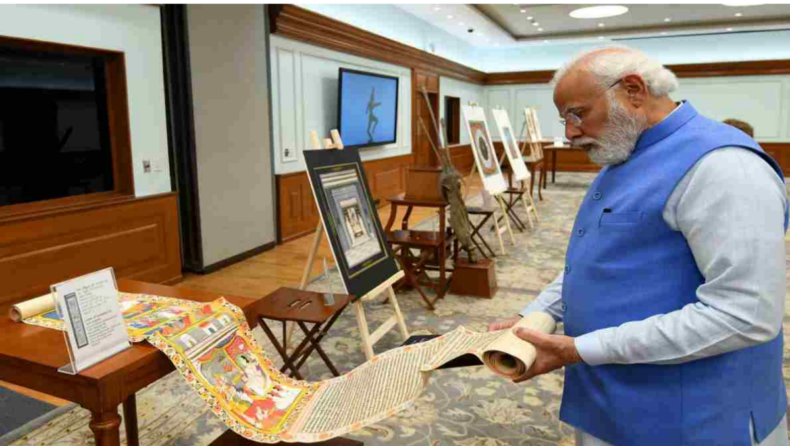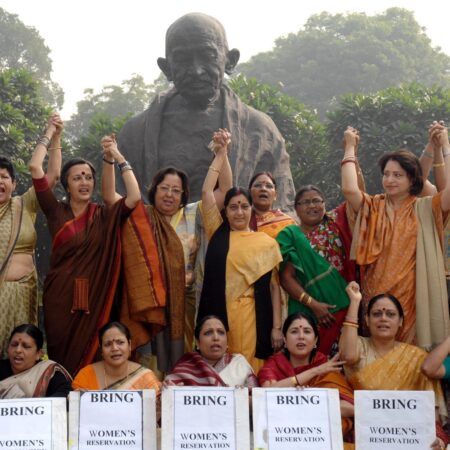PM Modi on Monday inspected 29 stolen antiquities dating as back to the 9th century that was brought back to India from Australia about a week ago. PM Modi also thanked his Australian counterpart, Scott Morrison, for the return of the antiquities, while speaking at the second India-Australia virtual summit on Monday.
He said the antiquities have been illegally taken from Rajasthan, West Bengal, Gujarat Himachal Pradesh, and other states.
In 2019, Australian Prime Minister Scott Morrison had announced the return of other Indian artifacts held by the National Gallery of Australia.
PM Morrison also quoted
“Like India, we understand the value of ancient cultures and artifacts”.
The return of these artifacts was not only the right thing to do but also this is another demonstration of the deep relationship between Australia and India.
Categories of the antiquities
According to Archaeological Survey of India (ASI) officials, the antiques would be sent back to the states. Well, they will stone in in case of fires were filed.
In a tweet, the culture ministry said antics were divided into 6 broad categories. Shiva and his disciplines, Worshipping Shakti, Lord Vishnu and his forms, Jain tradition, Portraits, and decorative objects.
The antiquities, comprising a mix of sculptures, paintings, hooked and decorative objects, ranged from state across the country.
While 15 of the 29 artifacts have been identified as belonging to Rajasthan, the rest have been marked as originally from Tamil Nadu, Himachal Pradesh, Gujarat, Uttar Pradesh, Madhya Pradesh, and West Bengal.
About the artifacts
The oldest antiquity is the sandstone idol titled “Shiva Bhalrava” which is believed to date back to the 9th-10th century CE.
Other antiquities include a bronze statue of a 7th Century child saint from Tamil Nadu named “Sambandar”, a 12th-century sandstone statue from Gujarat depicting Goddess Durga slaying the Buffalo demon, and 11th-century marble relics from Mount Abu, showing the arc of Jain Shrine and Jain Sculpture.
The repatriated items also consist of photographic and painted portraits of Maharaja Sir Kishen Pershad Yamin and Hiralal A. Gandhi among others.
Total antiquities received
According to ASI officials, with the antiquities received from Australia, the number of retrieved antiquities since 2014 has reached 228.
Three more, one from Italy, the United Kingdom, and Australia could soon be brought back as they had been handed over to Indian High Commission in those countries.
The government has been actively pursuing the recovery of Indian antiquities that were stolen and forcibly taken away by colonists over the years. Between 2004 and 2014, only one antiquity was routed to India from foreign soil.
However, between 2014 and 2021, over 200 antiquities have either returned or are in the process of being returned.
Also, between 1976 and 2013, only 13 such antiquities have been returned this means in these seven years of the Modi government, India has brought back more asset treasures than four decades before it.
The virtual summit
PM Modi and his Australian counterpart Scott Morrison held talks on the occasion of the Second India-Australia virtual summit, to lay the road map on new initiatives and enhance cooperation in a diverse range of sectors between the two countries.
The summit follows the historic first virtual summit in June 2020, when the relationship between India and Australia was elevated to a comprehensive strategic partnership.
PM Morrison talked about the threat of increasing change in the Indo-Pacific region in the wake of “Russia’s aggression in Ukraine”.
In an apparent reference to China’s aggressive posture in the region, the Australian Prime Minister said the call by Quad leaders to discuss “Russia unlawful invasion of Ukraine”.
This also allowed discussing the “implications and consequences of that terrible event for our own region” in the Indo Pacific and the “coercion and the issues that we face here”.
PM Modi, however, didn’t refer to the Russian invasion and focused his remarks on the shared value and remarkable progress made by two countries in various sectors.
PM Modi also stressed the importance of an early conclusion of a Comprehensive Economic Cooperation Agreement (CECA) quoting “it will be crucial for our economic relations, economic revival, and economic security”.
Further adding he quoted, “There is also a good collaboration going on between us in Quad and our cooperation reflects our commitment to free, open, and inclusive Indo Pacific”.
Investments
The submit witnessed the largest ever trade Bat by the Australian government in India with investments worth rupees 1500 crores in the country across multiple sectors.
The two countries also concluded an early harvest agreement, which is aimed at liberalizing tariffs on the trade of certain goods between two countries or trading blocs before our comprehensive agreement.
Published By : VATSAL KOTHA
Edited By : KRITIKA KASHYAP













